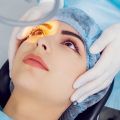A Detailed Analysis of Bertolotti's Syndrome

Bertolotti's Syndrome affects less than 10% of the population. Many people with this abnormality experience nothing, but those who do are more likely to experience chronic lower back pain.
Back pain is something that many adults experience at some point in their lives. Nearly two-thirds of the population will experience low back pain (LBP) at some point in their lives, and more than half will experience chronic LBP (back pain that lasts more than six months).
Because the cause of LBP is often not specific, determining why your back hurts can be a detective's task that necessitates X-rays and, in some cases, MRIs. These tests may identify Bertolotti’s syndrome, a lesser-known cause of mechanical LBP.
This article covers the causes, symptoms, and treatment of the Syndrome.
Understanding the syndrome
This common congenital condition was named after Italian physician Mario Bertolotti. It affects 10 to 20% of the population, with or without lower back pain.
The Syndrome occurs when the last lumbar vertebra—the lumbosacral transitional vertebra, or _LSTV— and the sacrum fuse or form a false joint due to an enlarged transverse process on the LSTV (bony bumps on the vertebrae where muscles and ligaments attach).
When a fusion of the LSTV and sacrum (known as sacralization) or pseudo-joint doesn't hurt — and many don't — it's just a feature of your anatomy that has been present since birth. You call it abnormality only when it causes LBP and seek Bertolotti syndrome treatment.
What causes this Syndrome?
This Syndrome can cause LBP in various situations involving inflammation and reactive muscle spasm. Here are some common ways:
- If the LSTV gets fused to the sacrum and iliac bone (the "wings" of the pelvic bone), an asymmetry in the structures of the lumbar vertebrae can stress the sacroiliac joint causing pain above the buttocks.
- A pseudo-joint lacks the cushioning and lubrication between the bones that other joints in the body have to absorb shock. It results in painful bone-on-bone grinding, which can eventually lead to osteoarthritis. It may also put additional strain on the pseudo-joint discs.
- Sacralization may reduce the mobility of your spine, hastening the wear and tear on the vertebrae and shock-absorbing intravertebral discs above this area.
- Muscle imbalances and fatigue can result from unequal forces on the surrounding muscle tissue caused by a misaligned spine. Although both sides of the back can be affected, tightness and spasms in the lower back and/or pelvis are usually limited to one side.
Symptoms
Most people are unaware they have a sacralization or pseudo-joint unless it is discovered by chance during an unrelated X-ray. However, in those cases where symptoms occur, they can vary significantly from person to person and usually appear in adulthood—in your 20s or 30s.
Some symptoms include:
- LBP that is localized and does not radiate down the legs
- Pain or discomfort in the sacroiliac joint area is possible.
- Pain and unexplained stiffness or difficulty moving in specific ways
- Sitting and laying improved symptoms.
How is the syndrome diagnosed?
Bertolotti syndrome can get diagnosed using a thorough physical exam, a good medical history, and X-rays. The physical exam will include movements that cause pain or discomfort, and an X-ray of the lower back and pelvis can then reveal any bony anatomy irregularities.
How is the syndrome treated?
Bertolotti syndrome is usually effectively managed with non- or minimally invasive treatments. These are some examples:
- Lifestyle changes to reduce the strain on the affected parts of the spine.
- Pain relievers sold over the counter (OTC), such as Aleve®, Advil®, or Tylenol®.
- Physical therapy to help strengthen specific areas and possibly improve mobility
- Injections of local anesthetic and sporadic corticosteroids along the affected nerves or directly into the pseudoarthrosis under fluoroscopic guidance to reduce inflammation. Fluoroscopy can also make medical diagnoses.
- Opting for Platelet-rich plasma (PRP) therapy that uses the body's platelets to reduce pain and inflammation and promote healing in damaged joints through an injection under fluoroscopic guidance. It avoids the harmful effects of corticosteroids, such as increased blood sugar and decreased healing. These treatments for Syndrome have not been thoroughly researched and are not covered by insurance.
- Prolotherapy, an alternative Bertolotti syndrome treatment that involves injecting a concentrated local anesthetic and dextrose into the affected area to enhance the body's natural healing ability
To Conclude:
Surgery is typically used as a last resort to treat this condition and to remove a pseudo-joint. The elongated transverse process can get reduced or removed surgically and the entire process is generally performed on the same day. However, it is essential to know that there isn't much high-quality evidence that surgery treats Bertolotti’s Syndrome effectively.
Is your back pain idiopathic? Check for Bertolotti syndrome. Find a spine specialist at advantage medical clinic to assist you.






